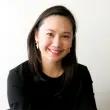Your Interview Aki Hayakawa

Aki Hayakawa
Designer
Japan
Introduce yourself (name, company, position, country) and tell us how you got into lighting design (including education/qualifications).
My name is Aki Hayakawa. I am the owner of Toh Design and a lighting designer.
When I was a child, I lived in Germany for three years because of my father’s job. I saw the beautiful illuminations of the churches and the buildings in the historical city, whereas, in those days, architectural lightings were not seen that much in Japan. I think that’s when I became interested in light for the first time. The Churches were silent in the daytime, but they looked different and lively in the nighttime, I felt. I remembered I looked back at those lights again and again on my way home.
When I was a high school student and deciding which path I was going to take after graduation, ‘nightscape’ was becoming hot in Japan. The iconic structures like Tokyo Tower or Rainbow Bridge started to be illuminated and caught people’s attention. I saw them and thought they were just beautiful. I learned there was a profession called ‘lighting designer’ who had created those lights, and I thought, “I want to be one of them!”. However, it was the time before the internet. It was tough for me to get information about lighting designers. I just only found Motoko Ishii’s office in the newspaper. ‘Lighting designer’ was a rare occupation at that time. I didn’t even know where and what to study to become one, so I decided to go to university and study architecture as the first step.
However, after I started to study architecture, I immediately recognized… it was not for me. I liked architecture and design, but I felt a strong resistance to make actual shapes like square or circle, and to imagine that the people living in the space that I designed.
I wrote letters to several lighting design studios asking for a job, but I couldn’t get any lighting designer’s post right after graduating from university. Then, I worked at a residential architectural studio for one year, but I didn’t fit in anyway. Fortunately, I found Lighting Planners Associates started recruiting at that time, and finally, I got into the lighting design field.
Tell us about your work – is there a specific type of project you like to work on or an area you specialise in and why?
I have done various types of projects, such as public facilities, cultural facilities, residences, retails, landscapes, and hotels. I had imagined I would get small-scale works like houses when I opened my studio, but it didn’t go that way to my surprise.
I prefer something I can think with my hands to just fast CAD drawings. I feel happy when I am drawing lighting images with color pencils. I control the expression of lights, adjusting to the scales of spaces or the numbers of revise.
What project are you most proud of and why?
I would say “FARMUS Kijimadaira,” which I have received the IES Illumination Award of Merit in 2016. On the project, we renovated the old canning factory of Del Monte into “Michinoeki” (Road station), a government-designated rest area for travelers and locals found along roads and highways in Japan.
It was located in Kijimadaira, Nagano prefecture (the middle-north of Japan) and an area with heavy snowfall in winter. It was near the crossroad surrounded by the vast rice fields. The architects and I aimed to create heartwarming scenery with warm lights as people felt relieved to see it after driving in the snowy village.
We made some illuminated structures like light-up sheds and combined with the old factory building, and the insides of them were a market, cafe and restaurant. The roof of the sheds was like a membrane ceiling. It emitted light both indoor and outdoor by one luminaire installed inside of the roof. I also designed some pendant lamps made from Masu, a measuring box for rice because this area is famous for its rice. The budget was minimal, but we were able to make the scenery that we exactly had imagined.
Also, this was my first project shot by Toshio Kaneko, who was a famous lighting photographer in Japan.
What is the biggest challenge that you have overcome in your career?
I have faced a lot of challenges about taking the balance between work and childcare.
First and foremost, I struggled to conceive a child because I was too busy at work. I had business trips a lot also. After I had a child, I found out my company didn’t have regulations about supporting childcare for employees such as maternity leave and reduction of working hours, so I needed to discuss one by one with my boss. Sometimes I drew lighting plans on the computer, giving my crying baby a piggyback ride in the middle of the night. One of the reasons I opened my studio was not to change my children’s favorite nursery school because of my job. Now I work at home, but it isn’t easy to separate my private life and work.
When my children were very young, I was a “lack-of-nightscape-experiences” lighting designer because I couldn’t leave my house and go out behind them. That was quite a tough situation for me. I had to propose a new design just from the idea stock in my mind without getting fresh inspirations. There were few chances to see designed lightings, and I saw only street lights and car lights through the window. I was so starved for designed lightings that I could get even touched by those ordinary lights.
How does light inspire you?
I want to make people touched by light like I was as a child. Lighting is functional, but I think it’s more than that. It often turns out to be beyond my expectations when we first switch on the lights at the site, and I like that. I want to create something I can give people that kind of emotion.
What is your message for other Women In Lighting?
There are a lot of female lighting designers in Japan. Moreover, some of them are pioneers.
It is natural for me female lighting designers are active, so I felt something was a little off when I first heard about Women In Lighting. However, when I think of it, women tend to take quite a lot of roles outside of jobs, and the time we can focus on the tasks at work is limited. Things expected for lighting designers are gradually changing with the times. I have realized what individuals can do is limited, so we need to keep horizontal connections and help each other. Besides, it isn’t very easy for female workers to hold a key position in any committees due to the limitation of the time. I think how to inherit the legacy of the female pioneers is one of our missions.
I think many lighting designers seem to have gentle and soft personalities, and they are good at easing the atmosphere on the site because they need to communicate with a variety of people there. I could say lighting designers make use of such “feminine” characteristics in a way, regardless of gender. We organize the information, listen in a flexible attitude, and propose new designs with it.
—
Interviewed by Lyshus; Translated by Akane H
“I think how to inherit the legacy of the female pioneers is one of our missions.”
Selected portfolio:








